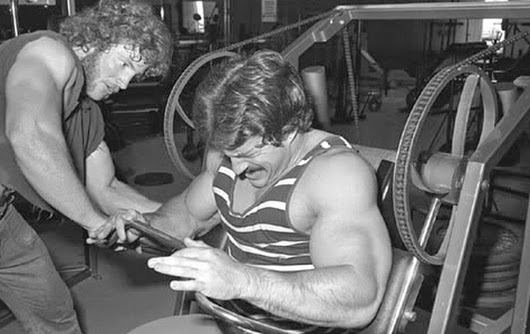(This is a guest post by Kevin Jones.)
Though intimidating on the outside, high-intensity interval training (HIIT for short, and also known as high-intensity intermittent exercise or sprint interval training) is well worth the effort you put into it.
For those already accustomed to following an exercise regimen, HIIT can be one of the only ways to push your endurance beyond regular boundaries. Matched with another form of exercise, HIIT can help you take advantage of every minute of your workout.
Though it may not seem like the ideal pair at first, strength training is a perfect match for HIIT. These two types of exercise are different and should be considered as such, given that strength training focuses on muscle growth while HIIT focuses on building cardiovascular and cardiorespiratory endurance. Together, both HIIT and strength training can form a reciprocal relationship that will take advantage of several unique fitness benefits.
If your overall exercise time is limited, then you may just find that HIIT and strength training together to be an optimal solution to attaining maximum results from your condensed workout sessions.
Read on if you’re ready to bring shorter rests, enhanced movement patterns, and improved psychological endurance to your regular exercise routine.
Shorter Rests
Modified rest patterns are one of the easiest HIIT methods to bring into your normal exercise regimen, especially if you focus on strength training.
One of HIIT’s primary goals is to raise your heart rate exponentially through high-intensity activity followed by short rest periods. This goal can be incorporated into a strength training regimen with ease.
For example, while performing kettlebell swing sets, you can slowly lower the amount of time spent resting between each set. This causes your heart to adjust to the modified workload, which in turn increases your cardiovascular endurance at higher levels of physical output.
Kettlebells aren’t the only traditional strength training equipment that can be adapted to HIIT methods. Barbells, free weights, and more can all be used while you try to progressively lower your rest times and increase your cardiovascular endurance.
Shortening rests can be difficult at first, even for a participant in ideal physical condition. After all, you are intentionally putting a strain on (and enhancing) your aerobic capacity. As such, you should always work towards your HIIT goals with caution and awareness of your own capabilities. Also, preserve a consistent breathing pattern throughout your workout and take longer breaks if you become light headed.
Compounding Movement Patterns
After incorporating HIIT-style short rests into your strength training routine, you can add further HIIT exercise benefits by compounding your overall movement patterns. Rather than focusing on just a single set of muscles, this method calls on you to switch up and engage as many large muscle groups as possible to maximize oxygen demand.
For example, you can incorporate the classic push-pull movement pattern to your new high-intensity routine. Moving from bicep curls (pull) to a bench press (push) after minimal rest will allow your heart to remain at peak oxygenation levels through the second and successive exercises. This, in turn, makes it easier for you to reach this peak level in the future.
No matter what precise exercises you choose, you’ll be engaging different muscle groups in quick succession. “Push” muscles rest while “pull” muscle are fully engaged, and vice versa, allowing you to maximize both muscle groups’ growth while also enhancing your endurance through quick set successions.
Incorporating this type of movement compounding can really add variation to your HIIT/strength training workout as well. Simply plan out your progression, repetitions, and sets in advance, then swiftly move from one exercise to the next to minimize heart and lung rest.
Improved Psychological Endurance
Working HIIT methods into pre-established strength training regimens is also an excellent way to overcome psychological barriers and reaching maximum strength outputs. Once you know that you are physically capable of attaining new heights, you will find that it is easier to push beyond pre-established boundaries in the body and mind.
Those who have practiced strength training for an extended period of time know that reaching a wall, physically and psychologically, is inevitable. Adding HIIT methods is one way to power through your struggle and break through that wall.
Because HIIT calls for pushing your body at a high-intensity workload for short periods of time, you’ll begin to get a feel for what it’s like to perform at the next level. Though this will likely bring some duress initially, you’ll find that in time, you will become more adjusted to this enhanced workload.
Though these psychological results may not appear immediately, a regular commitment of 30 minutes or less of HIIT/strength training will begin to show the high bar of performance your body can achieve under pressure. This can result in a heightened sense of physiological goal setting, built upon the knowledge that high-intensity performance is already within your reach.
Moving to the Next Level on a Limited Schedule
Overall, HIIT and strength training combined show great potential for enhancing your overall muscle tone and quality while simultaneously building cardiovascular endurance.
These two prime categories will build off of one another, as well. As you grow in strength, you’ll be able to demand more of your cardiovascular system by engaging large and diverse muscle groups. As your cardiovascular endurance grows, you’ll be better able to fit more into your condescend workout by cutting down on rest time and maximizing repetitions.
In so many words, HIIT layered into strength training is one of the best ways to take your workout to the next level while remaining on a limited workout schedule. Because high-intensity segments can be as short as four minutes and as long as 30 minutes, you have the power to choose how many high-intensity repetitions can fit into your limited workout.
Even if you can only fit a few high-intensity repetitions in per workout, you can be sure that continued commitment to the method will eventually result in improved cardiovascular endurance and enhanced strength training outcomes.
About The Author:
Kevin Jones has mastered a busy lifestyle with work and fitness combined with family life. He writes offering solutions for personal fitness and time management as well as keeping families fit together by utilizing activities and diet.













